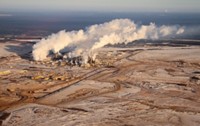Advertisement
Grab your lab coat. Let's get started
Welcome!
Welcome!
Create an account below to get 6 C&EN articles per month, receive newsletters and more - all free.
It seems this is your first time logging in online. Please enter the following information to continue.
As an ACS member you automatically get access to this site. All we need is few more details to create your reading experience.
Not you? Sign in with a different account.
Not you? Sign in with a different account.
ERROR 1
ERROR 1
ERROR 2
ERROR 2
ERROR 2
ERROR 2
ERROR 2
Password and Confirm password must match.
If you have an ACS member number, please enter it here so we can link this account to your membership. (optional)
ERROR 2
ACS values your privacy. By submitting your information, you are gaining access to C&EN and subscribing to our weekly newsletter. We use the information you provide to make your reading experience better, and we will never sell your data to third party members.
Environment
Diamondoids For Tracing Oil Spills
Naturally occurring compounds can lead investigators to source of fuel spills
by Sarah Everts
August 28, 2006
| A version of this story appeared in
Volume 84, Issue 35

Forensic investigators searching for oil spill culprits have a new tool for tracking down whodunit. Researchers at Environment Canada, in Ottawa, characterized diamondoid compounds for use in fingerprinting spilled oil distillates of low or medium molecular weight, such as diesel and jet oil (Environ. Sci. Technol., DOI: 10.1021/es060675n).
When environmental chemists want to track down the origin of a spill, they compare−often using a combination of gas chromatography and mass spectrometry−the constituents of spill samples with suspected sources. Commonly used biomarkers for crude oil spills are high-molecular-weight terpanes and steranes that get removed during refining and are therefore not ideal for fingerprinting lighter distillates. But lighter distillates are often implicated in groundwater contamination from underground fuel receptacles at gas stations or military bases. Sinking ships also release light- to midrange distillates because they use diesel in fuel, either directly or as an agent to reduce fuel viscosity.
Enter the diamondoids, a family of rigid, three-dimensionally fused cyclohexyl alkanes such as diamantane. With cage structures that look, as one might suspect, like diamonds, the compounds are naturally occurring in oil.
The ratio of different diamondoid compounds provides a regional signature for the oil's origin, says study author Zhendi Wang. The flora and fauna in Saudi Arabia vary from those in Alberta, so when organic matter decomposes with heat and pressure, diamondoids are produced in varying amounts, providing a regional signature.
During refining, diamondoids are concentrated in petroleum products. To boot, the researchers find that higher-molecular-weight diamondoids are not easily removed by evaporative weathering or altered by microbial degradation. This means diamondoids remain a usable forensic standard over a long period of time.
"Previous methods leave a lot to be desired for light- to midrange spills," comments Jeffrey W. Short, a research chemist with the National Oceanic & Atmospheric Administration's National Marine Fisheries Service. "This new method fills a void."






Join the conversation
Contact the reporter
Submit a Letter to the Editor for publication
Engage with us on Twitter